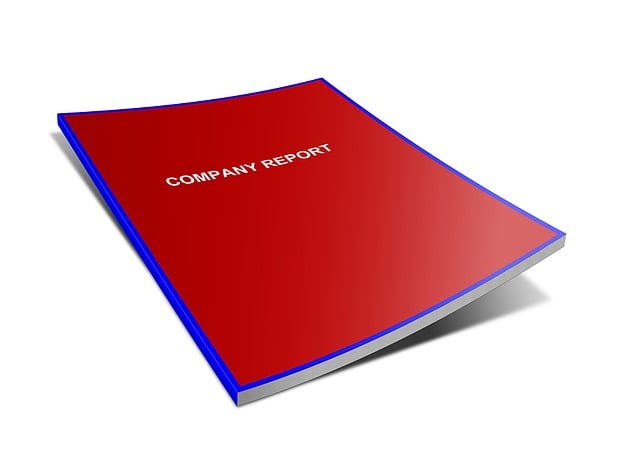Translating UK magazine articles requires a multifaceted approach that goes beyond language proficiency. It demands a deep understanding of cultural nuances, meticulous research, and the involvement of native speakers to preserve tone, context, and cultural references. Professional services employ standardization strategies, terminology management, and post-editing to ensure accuracy and cultural sensitivity. Visual elements must also be localized. Quality Control measures, robust Translation Memory databases, and client collaboration are key to delivering consistent, high-quality translations that resonate with diverse UK audiences in a global market.
In today’s globalized world, accurate and consistent translated content is paramount for UK magazine articles aiming at international audiences. This article explores essential strategies to ensure seamless communication across languages. From understanding cultural nuances that shape meaning to leveraging native speakers in quality assurance, each step ensures a polished final product. Discover best practices for standardization, terminology management, localization of visual elements, post-editing, and robust quality control measures. Learn how collaboration between translators and clients drives optimal results for your UK magazine articles’ translation services.
- Understanding Cultural Nuances for Accurate Translation
- The Role of Native Speakers in Quality Assurance
- Standardization: Creating a Consistent Tone and Style
- Terminology Management: Maintaining Consistency Across Projects
- Localizing Images, Symbols, and Color Schemes
- Post-Editing: A Crucial Step for Refining Machine Translations
- Quality Control Measures to Catch Errors Early
- Building a Comprehensive Translation Memory Database
- Collaboration Between Translators and Clients for Optimal Results
Understanding Cultural Nuances for Accurate Translation

When translating content for a UK magazine article, understanding cultural nuances is paramount. Translations are not merely about converting words from one language to another; they involve conveying the intended meaning, tone, and context within a specific cultural framework. What may be acceptable or humorous in one culture could offend or confuse another. For instance, idioms, proverbs, and even colours can carry different associations across cultures. A UK magazine article translator must be adept at navigating these subtleties to ensure the translated content resonates with the target audience.
Translation services that excel in this aspect delve deeper into cultural research, consulting with native speakers or experts familiar with both languages and cultures. This meticulous approach guarantees that the essence of your article—its wit, sarcasm, or cultural references—remains intact during translation. For UK-based magazine publishers, choosing reliable translation services that grasp these nuances is key to producing content that connects with readers from diverse backgrounds, elevating the overall quality of their publication in a multicultural market.
The Role of Native Speakers in Quality Assurance

In the realm of UK magazine articles translation services, ensuring consistency is paramount to preserving the original intent and tone. One critical aspect of this process involves the strategic involvement of native speakers. These individuals, deeply rooted in the language’s nuances, play a pivotal role in quality assurance. By reviewing translated content, they identify not just grammatical accuracy but also cultural subtleties, idiomatic expressions, and stylistic consistency.
Native speakers act as a bridge between the source text and its target audience, ensuring that the translated article resonates naturally within the new language’s context. Their expertise helps to avoid literal translations that might sound awkward or fail to convey the intended meaning. This meticulous process is essential for maintaining the integrity of the UK magazine’s editorial standard, making certain that each article, regardless of its language, retains its original essence.
Standardization: Creating a Consistent Tone and Style

Consistency in tone and style is paramount when it comes to translated content, especially for high-quality publications like UK magazine articles. Professional translation services understand that mere word-for-word rendering often falls short of capturing the original essence, particularly when cultural nuances are involved. Therefore, they employ strategies like standardization to ensure a seamless transition from one language to another. This involves creating style guides and tone templates that dictate how certain phrases, terms, and even specific vocabulary should be handled across all translations.
By adhering to these guidelines, UK magazine articles translated by expert services maintain the intended voice of the author while adapting it to resonate with the target audience’s linguistic preferences. Standardization also helps in creating a unified reading experience, ensuring that the translated content feels natural and flows smoothly, just as it would in the source language. This level of consistency is crucial for maintaining the credibility and impact of the original article among readers who may pick up the magazine from different parts of the world.
Terminology Management: Maintaining Consistency Across Projects

In the realm of UK magazine articles translation services, terminology management plays a pivotal role in ensuring consistency across projects. It involves creating and maintaining a comprehensive glossary of terms specific to the industry or client’s domain. This process guarantees that key phrases and concepts are translated accurately and uniformly throughout various documents. For instance, when translating medical articles, consistent use of medical jargon and terminology ensures the integrity of information.
A robust terminology management system streamlines the translation process by providing translators with ready-to-use resources. It reduces ambiguity and minimizes the risk of misinterpretation, thereby enhancing overall quality. Moreover, it facilitates collaboration among translators, reviewers, and clients, ensuring everyone works from a shared understanding of terms. This level of consistency is particularly crucial for maintaining the editorial integrity and readability of UK magazine articles in their target languages.
Localizing Images, Symbols, and Color Schemes

When translating content for a UK magazine, attention must be paid to more than just words. Localizing images, symbols, and color schemes is crucial for ensuring cultural consistency and effectively communicating the intended message across languages. Images should resonate with the target audience; what is considered meaningful or humorous in one culture might not translate well elsewhere. For instance, certain gestures or visual metaphors may have different interpretations or none at all in another language and cultural context.
Symbols and color schemes also play a significant role in communication. Different cultures associate specific colors with varied meanings. What’s more, some symbols hold universal significance while others are unique to particular regions. UK magazine articles translated by professional services should consider these nuances to avoid potential misunderstandings or offensive interpretations. Localizing these elements ensures that the visual narrative aligns seamlessly with the textual content, creating a harmonious and culturally sensitive reading experience for the target audience.
Post-Editing: A Crucial Step for Refining Machine Translations

Post-editing is an indispensable stage in the translation process, especially for UK magazine articles aiming to reach global audiences. While machine translation tools have made incredible strides, they are not infallible. Automated translations may contain errors or inconsistencies that can impact the quality and readability of content. This is where human expertise comes into play—a pair of fresh eyes to review and refine the output.
In a UK magazine article translation service, post-editing ensures that the translated text aligns perfectly with the source material in terms of style, tone, and meaning. It involves verifying factual accuracy, checking for grammatical errors, improving sentence structure, and ensuring cultural nuances are appropriately conveyed. This critical step guarantees that the final piece is polished, coherent, and ready to engage readers worldwide, maintaining the integrity of the original content.
Quality Control Measures to Catch Errors Early

In the realm of UK magazine articles translation services, catching errors early is paramount to maintaining consistency and quality. Implementing robust Quality Control (QC) measures acts as a crucial filter, ensuring that only accurate and culturally appropriate content reaches readers. This involves a multi-step process where human reviewers, often language experts or native speakers, meticulously check for grammatical accuracy, fluency, and semantic coherence. Automated tools, such as spell checkers and translation memory software, also play a vital role in flagging potential issues and preserving terminological consistency across projects.
By integrating these QC measures into the translation workflow, service providers can proactively identify and rectify errors before content is published. This not only safeguards the integrity of the original article but also enhances reader engagement by delivering error-free, seamless translations that accurately convey the author’s intended message.
Building a Comprehensive Translation Memory Database

In the realm of UK magazine articles translation services, building a comprehensive Translation Memory (TM) database is an indispensable step for ensuring consistent and high-quality output. A TM database acts as a digital repository of previously translated segments, such as phrases or sentences, which can then be reused in future translations, thus saving time and effort while maintaining accuracy.
By populating this database with content relevant to the specific magazine article genre, translation teams can ensure that terms, idioms, and stylistic elements remain consistent across different articles. This is particularly crucial for UK publications aiming to maintain their unique voice and tone in global markets. Regular updates and meticulous management of the TM database are essential to reflect evolving language usage and cultural nuances, making it a dynamic asset in the translation process.
Collaboration Between Translators and Clients for Optimal Results

When it comes to ensuring consistency in translated content, collaboration between translators and clients is key. Effective communication allows for a clear understanding of the brand voice, tone, and style guidelines specific to the UK market. Clients should provide detailed source materials, including any existing brand assets or style guides, to give translators a solid foundation to work from. Regular feedback sessions enable translators to refine their work, ensuring it aligns perfectly with the client’s expectations.
Through collaborative efforts, translators can maintain consistency in terminology, cultural nuances, and overall message across various UK magazine articles. This back-and-forth process fosters an environment where both parties are invested in delivering high-quality content. By prioritizing open dialogue, clients and translators can achieve optimal results, creating engaging translated articles that resonate with the target audience in the UK.
When it comes to UK magazine articles translation services, achieving consistency is key to delivering high-quality content. By understanding cultural nuances, leveraging native speakers, standardizing tone and style, managing terminology effectively, localizing visual elements, post-editing machine translations, implementing robust quality control measures, cultivating a comprehensive translation memory database, and fostering collaboration between translators and clients, you can ensure your translated articles maintain their original meaning, intent, and consistency across various platforms.



